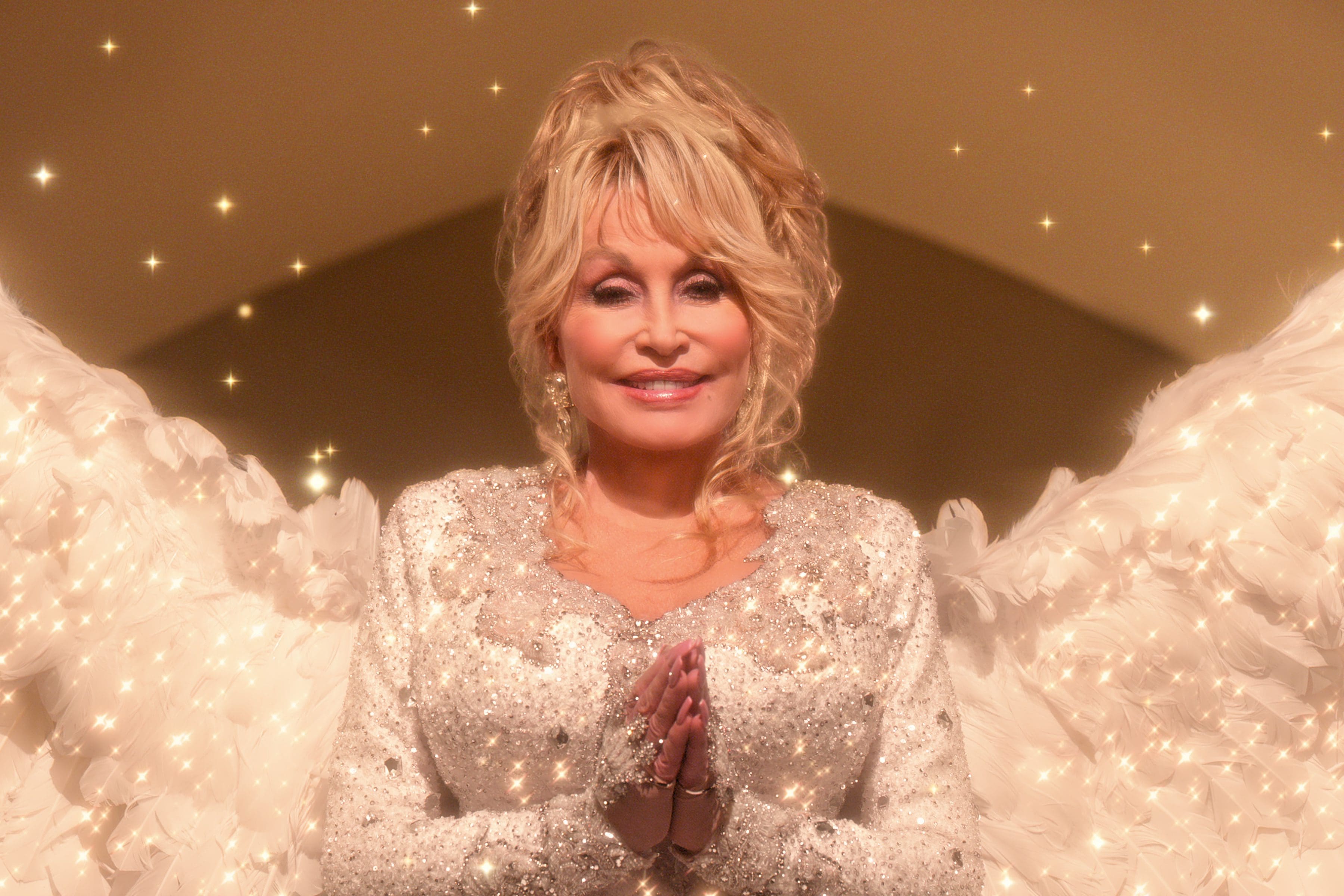
Dolly Parton is a gift to us all. From writing all-time great songs like “Jolene” and “I Will Always Love You”, to great performances in films like 9 to 5, to helping fund a COVID-19 vaccine, she’s given us so much. Now, Netflix bring us Dolly Parton’s Christmas on the Square, an original musical that stars Christine Baranski as a Scrooge-like landowner who threatens to evict an entire town on Christmas Eve to make room for a new mall. Directed and choreographed by the legendary Debbie Allen and counting Jennifer Lewis and Parton herself amongst its cast, Christmas on the Square seems like the perfect movie to save Christmas 2020. Unfortunately, it doesn’t quite live up to those hopes.
From its opening number, the titular “Christmas on the Square”, the film feels more like an NBC live-action musical than a traditional movie musical. In part, that’s because Maria S. Schlatter–who wrote the script–originally wrote it as a stage play. Allen and production designer Ina Mayhew retain that theatre quality, with sets that are obviously artificial as well as dancing and camera movement that feels presentational. Though that live-musical quality does give the film much of its joyous energy, it also keeps the audience constantly aware that it’s watching actors on sets and it’s difficult for viewers to fully buy into this world and its characters.
Admittedly, Fullerville and its residents aren’t supposed to be entirely real. Christmas on the Square is a morality play that largely functions as a delivery system for a bunch of new Dolly Parton songs. Indeed, there is so little break between each number that the music can almost feel exhausting—particularly because every new song seems to deliver a new plot thread. There’s Pastor Christian (Josh Segarra) and his wife’s struggle to have a baby, Regina’s villain origin, even an It’s a Wonderful Life angel getting their wings knock off. Each subplot has something to enjoy, but Schlatter’s script contains so little dialogue to connect the songs or the points in each arc that it’s difficult to feel the emotions they’re trying to inspire.
Still, Christmas on the Square could get away with a weak story if its musical numbers were good enough to sustain the audience’s interest and while Parton’s songs are as good as ever, Allen’s directing doesn’t always serve them best. While Allen’s choreography is consistently thrilling, Oliver Bokelberg‘s cinematography is often too close to the dancers, not allowing the viewer to appreciate either the athleticism of individual movements or the joy of seeing the ensemble move as one. One of the most frustrating examples comes in a scene where Parton sings as Jeanine Mason as Regina’s assistant Felicity dances. As Mason, a trained dancer, leaps and twirls around a ballet studio, the camera either cuts her off at the waist so we can’t see her footwork or loses track of her altogether. Bokelberg’s choices are similarly frustrating in static scenes as well. During a number where Carl sings to Regina, the camera constantly sways back and forth for no apparent reason. The nostalgia and hurt that song is meant to convey are undercut almost to the point of near meaninglessness—a travesty considering how skilled Parton is at creating meaningful music.
Indeed, what has allowed Parton’s music to last is the strength of her songwriting. At turns gospel, folk and pop, the lyrics are consistently poetic and clever, and they continue to connect with listeners because the emotions they convey feel timeless. While it’s perhaps too early to say whether any of the songs in Christmas on the Square will become perennial classics, there are certainly some contenders. Songs like “Christmas Is” (which was also released as a duet between Parton and Miley Cyrus) and “Christmas on the Square” seem like obvious choices, but it’s the film’s less sincere numbers that are some of its most enjoyable.
While “The Wickedest Witch of the Middle”, where Christian’s parishioners delightedly suggest ways to kill or maim Regina is wonderfully surreal, perhaps the most fun showcase for Parton’s cheekier side is “Life is Not a Fairytale,” sung by Regina and a young girl named Violet (Selah Kimbro Jones), whose father (Matthew Johnson) has left her to tend bar alone while he attends the aforementioned church meeting. Baranski and Jones share a playful chemistry and the relaxed, tongue-in-cheek energy is the film’s first unforced moment of genuine fun.
Unfortunately, good as that subplot starts, Schlatter’s script bungles it by rushing the emotional beats. It’s pretty easy to guess that Violet will become a big part of Regina’s redemption arc, but things turn dark in a shocking way that feels emotionally manipulative at best and possibly in bad taste at worst. Watching Violet’s father sing a song over her hospital bed about seeing her in the afterlife if she dies is downright ghoulish and no amount of committed acting from Johnson or clever songwriting from Parton can save it.
Dolly Parton’s Christmas on the Square is an undeniably flawed film. Despite a talented cast and consistently enjoyable songs, it’s simply too underwritten and poorly-adapted from stage to screen to totally work. It’s more old-fashioned weepy than joyous musical and while a lot of viewers will still find a lot to like, those hoping Dolly Parton will save this weird Christmas season will likely be disappointed.

